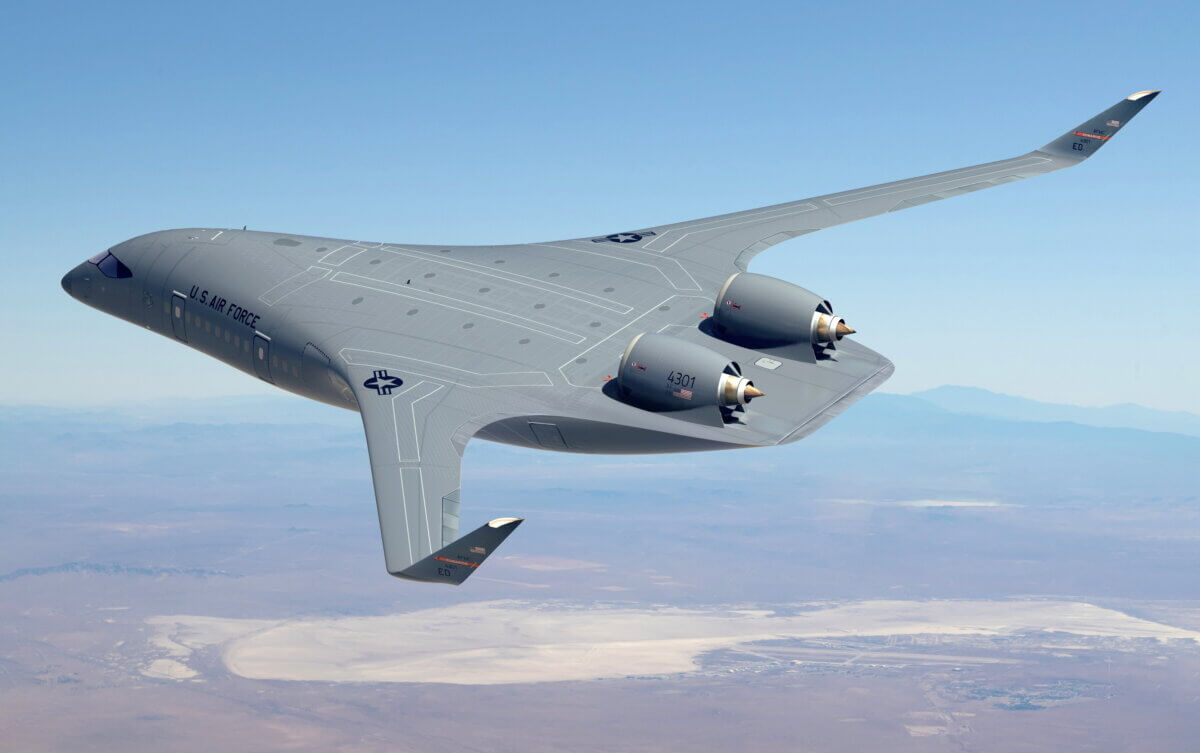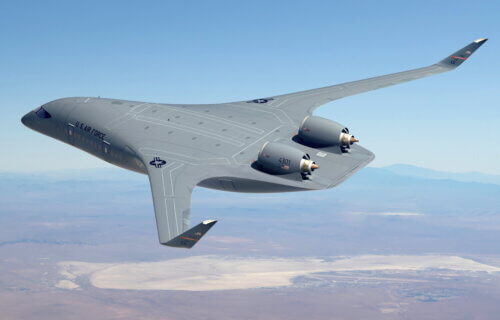ARLINGTON, Va. — The American military is investing $235 million in a space-age style warplane. On Aug. 16, the United States Air Force announced that they selected the Los Angeles firm, JetZero, for the next phase of a blended wing body (BWB) prototype aircraft project.
Designed to carry over 200 passengers, this highly-efficient design deviates from traditional “tube-and-wing aircraft.” It blends the aircraft body into a high-aspect-ratio wing, decreasing aerodynamic drag by at least 30 percent and providing additional lift. The hope is that the BWB design, potentially coupled with future conversion to hydrogen propulsion, could lead to substantially increased fuel efficiency and zero carbon emissions.
The Air Force Operational Energy Office expects to complete initial flight testing as early as 2027.

The U.S. Air Force explains that this increased efficiency will enable extended range, more loiter time, and increased payload delivery efficiencies — capabilities that are vital to mitigating logistics risks. Several military transport configurations are possible with the BWB. Together, these aircraft types account for approximately 60 percent of the Air Force’s total annual jet fuel consumption.
“Blended wing body aircraft have the potential to significantly reduce fuel demand and increase global reach,” says Secretary of the Air Force Frank Kendall in a media release. “Moving forces and cargo quickly, efficiently, and over long distance is a critical capability to enable national security strategy.”
As outlined in the Fiscal Year 2023 National Defense Authorization Act, the U.S. Department of Defense plans to invest $235 million over the next four years to fast-track the development of this “transformational dual-use technology,” with additional private investment expected.
This effort is the result of collaboration between the Department of the Air Force, the National Aeronautics and Space Administration (NASA), and the Defense Innovation Unit, with assistance from the DoD’s Office of Strategic Capital.
“It’s been a little over a hundred years since a few brave Airmen took to the skies and proved the first aerial refueling capability, extending the global reach of our Air Force. This announcement marks another game-changing milestone for the Air Force in our efforts to maintain the advantage of airpower effectiveness against any future competitors,” says Dr. Ravi Chaudhary, assistant secretary of the Air Force for Energy, Installations, and Environment.
A former C-17 Globemaster III pilot and engineer, Dr. Chaudhary is leading efforts to ensure efficiencies in operational energy, aiming to build greater agility for theater commanders.
Although the BWB concept has been around for decades, more recent technology advancements in structural design, materials technology, manufacturing, and other areas have made large-scale production achievable. The commercial industry, including passenger airlines and air freight companies, stands to benefit from the development of this technology as well. It has the potential to increase available cabin or cargo space while decreasing operational fuel costs.
You might also be interested in:
- Women’s secret war: The inside story of how U.S. military sent female soldiers on covert combat missions to Afghanistan
- Pentagon reportedly planning new ‘weapon of mass destruction’ — a horde of missile-carrying drones
- U.S. Air Force invests in next-gen radar-jamming technology
South West News Service writer Dean Murray contributed to this report.

